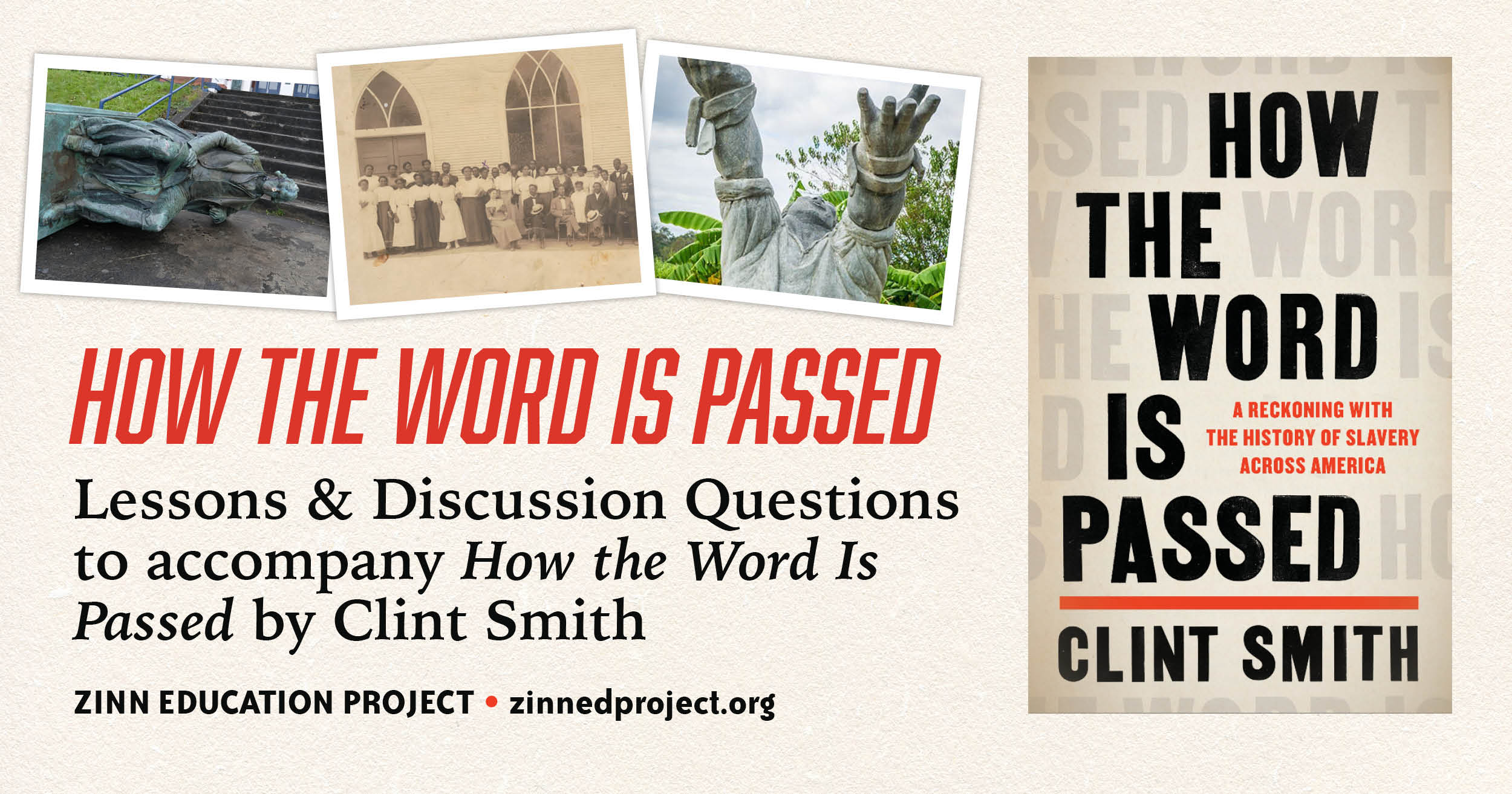In How the Word Is Passed, Clint Smith explains that one cannot understand United States history without focusing on the centrality of slavery. This history is essential to help our students make sense of the world around them.
At the Zinn Education Project, we offer lessons, discussion questions, and writing prompts to take students deeply into Smith’s brilliant, New York Times best-selling book.
Share a story about using any of the lessons or discussion questions for Smith’s book and in appreciation we’ll send you more copies of How the Word Is Passed for your class. The three top stories will receive a set of 20 and the others will receive one to five copies. Your teaching stories will be posted online to inspire other teachers and they will be shared with Smith.
Share a story about using any of these lessons or questions:
- Echoes of Enslavement — Not Only in the South, but Everywhere
- How We Remember: The Struggle Over Slavery in Public Spaces
- Lives in Our Lineage: A Lesson on Oral Histories
- Discussion Questions
Teaching Stories
As an example, here is a How the Word Is Passed teaching story.
New Jersey high school U.S. history teacher Allyson Saladino wrote to tell us about her use of our lesson, “How We Remember.” She said,
In lieu of a traditional mid-term exam for one of my U.S. History I classes, I had them complete the Zinn Education Project activity “How We Remember.” I had read How the Word Is Passed by Clint Smith last year and was blown away by how the history is handled at many of the highlighted locations and his extreme attention to detail.
I’ve since used excerpts from Smith’s book in class, but this lesson had the students use the text in a way that required them to interact with the sites, as well. The commemorations were thoughtful and the students did an incredible job bringing justice to the history of enslavement at those locations.
Here is one of their projects:
The students assigned Angola created a script for a guided tour. They included images and provided visuals to go along with the script. The brutal facts of Angola as a plantation and as a prison were presented. In the end, “visitors” were encouraged to sign a petition to close Angola. The plan was to make it a museum that focuses on the history of Black Americans’ struggles both during and after enslavement.









Students held a day in the life activity to note all of the parts of each of their days would be different during Jim Crow in order to have some awareness of the restrictions and the impact on day to day lives as well as future progress.
Our students and teachers are reading Half American and exploring how racism affects the daily lives of people of color and whites too! Many students commented about how policy affect the lives of people. We had an opportunity to host Heather McGee who wrote the book The Sum of Us. We were taken with how simply she provided examples of how racism is detrimental to white as well as Black people. We are going to have a community showing of the movie, The Rebellious Life of Mrs. Rosa Parks. We plan to have a panel discussion. We will provide you with pictures from our work this year.